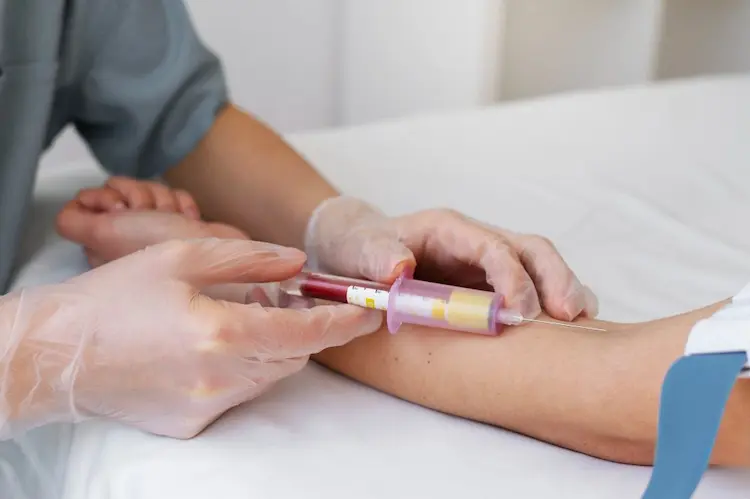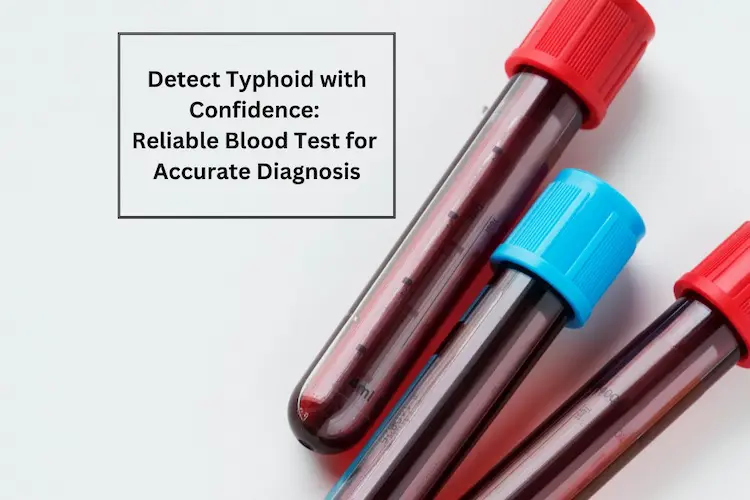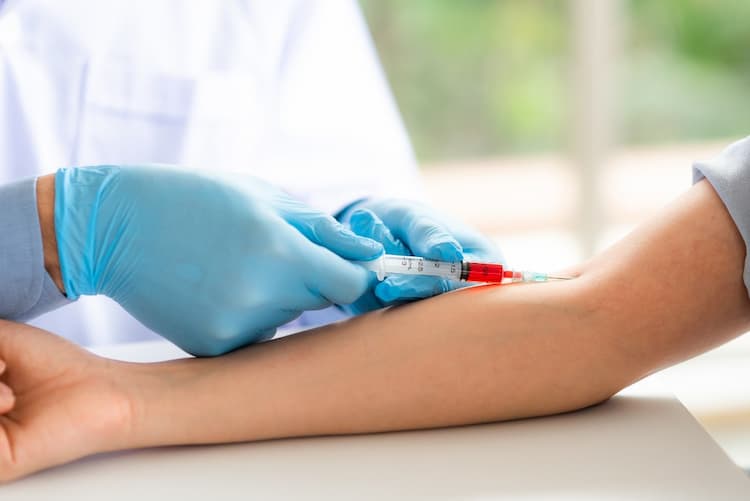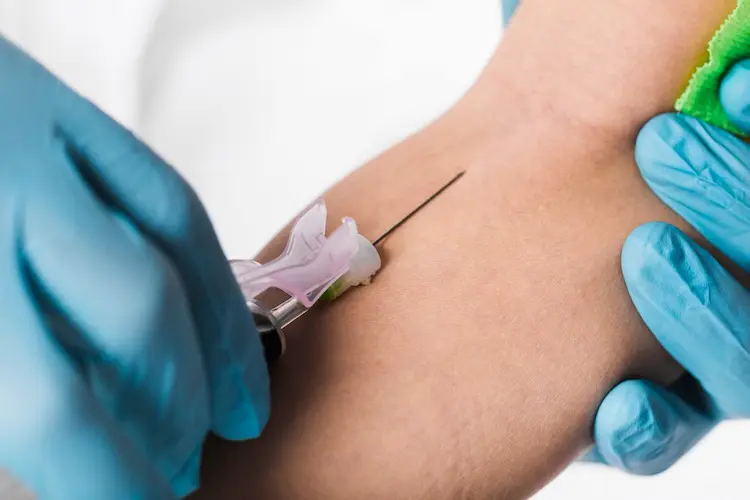Serum Amylase Test: Price, Normal Range, Procedure 2024

Medically Reviewed By
Dr Divya Rohra
Written By Prekshi Garg
on Mar 11, 2022
Last Edit Made By Prekshi Garg
on Mar 18, 2024
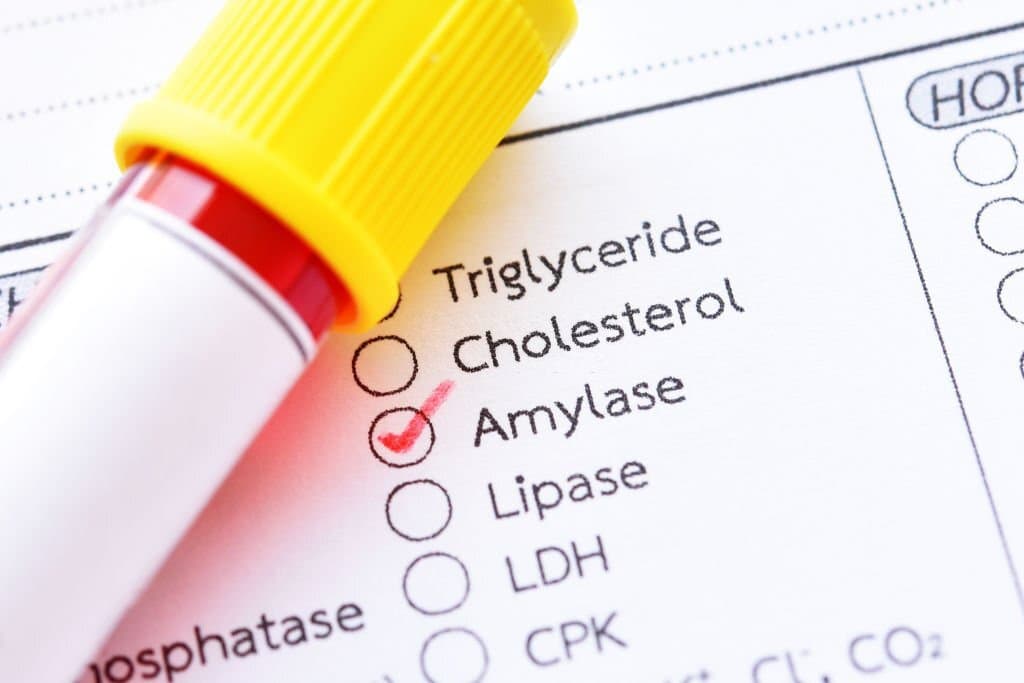
Our body secretes hormones and enzymes that support different physiological functions. Amylase is one such quintessential enzyme that helps digestion. While trace amounts of amylase in blood and urine are considered safe, a drastic difference in the levels can indicate a lot of underlying complications.
The primary function of the amylase enzyme is to hydrolyze or break down the starch from ingested food into simple sugars for generating energy. Amylase is primarily made in the pancreas and smaller amounts in the salivary glands.
The Serum Amylase test measures the amylase levels in the patient's bloodstream. High amylase levels indicate signs of pancreatitis or associated complications in the pancreas.
This article will explore the serum amylase test, the procedure, normal values, and its significance.
Why do you need to get a Serum Amylase Test?
Physiological findings suggest that 40% of the total amylase is produced in the pancreas. So, elevated levels in the bloodstream indicate complications with the pancreas.
Suppose you see a doctor complaining of bad stomach ache, vomiting, and abdominal discomfort. In that case, your primary care doctor might prescribe a serum amylase test to rule out one of the following complications.
1. Pancreatitis
Acute pancreatitis, if left untreated, can prove fatal for the patient. The serum amylase test gives an idea about any possible inflammation in the pancreas. Pancreatitis can be acute and severe, or it can be chronic and prolonged.
Both of the conditions are fatal if left untreated.
Not just high levels, even alarmingly low levels of amylase in the bloodstream, indicate pancreatitis in the patient.
2. Cancer diagnosis
Not just pancreatic cancer, the S-amylase test also indicates several other types of cancers, including ovarian cancer and lung cancer.
The possibility of developing pancreatic cancer comes with chronic pancreatitis that’s either not diagnosed or treated. However, this is also a chance encounter, which means that not every patient with pancreatitis has the risk of developing pancreatic cancer. Your doctor might suggest getting a combination of amylase and lipase blood tests to rule out possible complications.
Studies have found a correlation between higher amylase levels in the saliva and potential ovarian cancer risks. Similarly, abnormally heightened levels of amylase levels in the bloodstream are indicative of lung cancer in patients.
3. Other diseases
Besides these prevailing conditions, abnormalities in the serum amylase levels also indicate several associated diseases, including gastrointestinal and digestive disorders, appendicitis, pregnancy, mumps, gallbladder attacks, etc.
Serum Amylase Test – Preparation and Procedure
If your doctor prescribes a serum amylase test, ensure that you discuss the medications you are on. Certain medications like opiates, aspirin, cholinergic, etc., can alter amylase levels. So, make sure you consult with your doctor before undergoing the test.
For better and more precise results, your doctor might suggest preparing for the blood test before taking the medications for the day. Besides that, the patient doesn’t have to fast or abstain from drinking water before the procedure.
Also, since the blood is typically drawn from the visible vein in the forearm, wear comfortable and half-sleeved clothes for better access. Once you arrive at the laboratory or the hospital, you have to follow the steps mentioned:
- You will sit in the sample collection room in the laboratory or the hospital in which you are getting tested.
- The phlebotomist will prep the blood collection site on your forearm with an alcohol pad and tie a tight band around the upper arm to restrict the blood flow to enhance blood pressure in the vein.
- A blood collection needle will be injected into the vein, and the required blood sample is calculated in a vial.
- The sample then goes for further testing and diagnosis.
Once done, you will be given a band-aid to apply over the syringe wound. You might be asked to keep your arm folded for a few minutes to prevent further bleeding.
What do the Serum Amylase test Results suggest?
The amylase normal range in a healthy individual is between 30-110 units per liter (U/L).
Depending on your physiological functions, the amylase levels might be very high, mildly high, or low. Both high and low amylase levels trigger and incite possible complications in the body.
Let us discuss the abnormal amylase levels and what they entail:
| Levels | Range | What does it indicate? |
| High levels of amylase | Over 110 units per liter (U/L) | -Acute or chronic pancreatitis
-Ovarian cancer -Lung cancer -Mumps -Cholecystitis -Ectopic pregnancy -Gastroenteritis -Peptic ulcer -Tumors in salivary glands |
| Low levels of amylase | Less than 30 units per liter (U/L) | -Pancreatic cancer
-Liver disorder -Renal disorder or failure -Preeclampsia |
Even mildly elevated amylase in the bloodstream can be an alarming sign. If there are any abnormalities with the test report, consider seeing your doctor for further treatment or advice.
What is the cost of the Serum Amylase test in India?
The cost of a serum amylase blood test in India starts from INR 150. The prices may vary, depending on the lab you are getting it from or the city you are in.
Conclusion
Amylase plays a very crucial role in the body’s physiological functioning. If you are experiencing common symptoms related to digestive issues, your doctor will prescribe a serum amylase test for a better diagnosis. An amylase blood test is a routine blood test that can diagnose a series of underlying diseases or disorders. We’d recommend following your doctor’s recommendations while preparing for the test.
Frequently Asked Questions (FAQs)
1. What is a serum amylase blood test?
A serum amylase blood test is a test that measures the amount of amylase in your blood or urine (pee). Amylase is an enzyme or a special protein produced by various organs, including the pancreas and salivary glands, that aids in digesting carbohydrates. A small amount of amylase in your blood is considered normal, but having too much can be a sign of a pancreas and salivary gland disorder, which requires immediate action.
2. What is the price of a serum amylase test?
The price of a serum amylase test is Rs. 400 only with Redcliffe Labs. We aim to provide a reliable, accessible, and affordable diagnostic test experience to all our patients across the country.
3. Is fasting required for a serum amylase test?
Fasting is not required for a serum amylase test. However, it is important to follow the instructions provided by your healthcare provider or the specific guidelines of the diagnostic laboratory you are getting tested at.
4. Which type of blood test is serum amylase and lipase?
Both serum amylase and lipase tests are blood tests that assess the function of the pancreas and diagnose conditions related to it. The serum amylase test measures the enzyme amylase levels in your bloodstream, while the serum lipase test examines the lipase enzyme in your bloodstream.
5. What happens if serum amylase is high?
High amylase levels can indicate conditions like acute or chronic pancreatitis. It's important to consult with a healthcare professional for proper evaluation and diagnosis.
6. What causes high amylase levels?
There are several causes of high amylase levels such as acute pancreatitis, chronic pancreatitis, pancreatic cancer, Pancreatic duct obstruction, salivary gland disorders, kidney disease, etc.
7. Can fatty liver cause high amylase?
A fatty liver is not typically associated with elevated amylase levels. But as amylase is primarily produced by the pancreas and salivary glands, its elevation is related to health conditions that affect these organs. Though there is no direct connection between fatty liver and amylase, there are underlying factors or coexisting conditions that may contribute to both fatty liver disease and increased amylase levels, such as pancreatitis, which usually results in high amylase levels and is observed in some cases of severe fatty liver disease.
